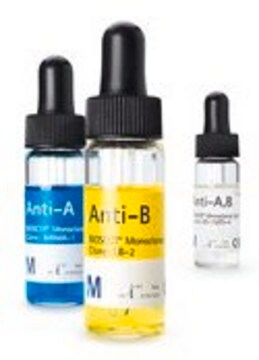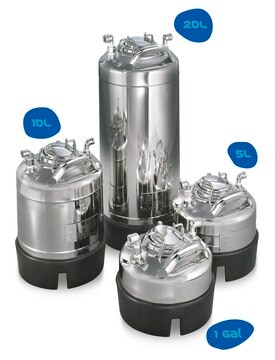ES-R1-EGFP B5/EGFP
07072007, mouse embryo. Monolayer of spheroidal cells on feeder layer of PMEFs.
Sinónimos:
B5/EGFP, ES-R 1, ES-R-1, ESR-1, ESR1
About This Item
Productos recomendados
Nombre del producto
ES-R1-EGFP B5/EGFP, 07072007, from mouse embryo
biological source
mouse embryo
growth mode
Adherent
karyotype
Not specified
morphology
Adherent monolayer of spheroidal cells on feeder layer of mouse primary embryonic fibroblasts
products
Not specified
receptors
Not specified
technique(s)
cell culture | mammalian: suitable
shipped in
dry ice
Cell Line Origin
Cell Line Description
DNA Profile
Culture Medium
KSR medium consists of KO-DMEM (Gibco 10829), 20% Knock-Out Serum Replacer (Gibco 10828), 2 mM Glutamine (Invitrogen 25030024), NEAA (Invitrogen 11140035), 0.1 mM ß-mercaptoethanol (Sigma M6250) and LIF 1000 Units/ml (ESGRO ESG1106).
Subculture Routine
Feeder layers are prepared on the gelatinized flasks at least 24 hours in advance of being required. An ampoule is thawed in 37?C water bath and the contents quickly transferred to a 15ml centrifuge tube. MEF medium is added drop wise to 5ml. Cells are centrifuged at 150 x g for 5 minutes at Room Temperature (RT). Cells are resuspended in 5ml of MEF medium. Cells are counted and added to flasks containing the correct medium at 1-3 x 104 cells/cm2.
An ampoule of ES cells is thawed in 37?C water bath and the contents quickly transferred to a 15ml centrifuge tube. KSR medium is added drop wise to 5ml. Cells are centrifuged at 150 x g for 5 minutes. Cells are resuspended in 5ml of KSR medium. The prepared feeder flask is washed once with PBS and KSR medium added. ES cells should be plated at 4-5 x 104 cells/cm2. Cultures must be incubated in a humidified 5% CO2/95% air incubator at 37?C. A 100% media change must be performed every day and cells passaged every 2-3 days. Colonies must not be allowed to touch each other as overgrowth will result in differentiation.
Other Notes
Disclaimer
Elija entre una de las versiones más recientes:
Certificados de análisis (COA)
It looks like we've run into a problem, but you can still download Certificates of Analysis from our Documentos section.
Si necesita más asistencia, póngase en contacto con Atención al cliente
¿Ya tiene este producto?
Encuentre la documentación para los productos que ha comprado recientemente en la Biblioteca de documentos.
Nuestro equipo de científicos tiene experiencia en todas las áreas de investigación: Ciencias de la vida, Ciencia de los materiales, Síntesis química, Cromatografía, Analítica y muchas otras.
Póngase en contacto con el Servicio técnico







